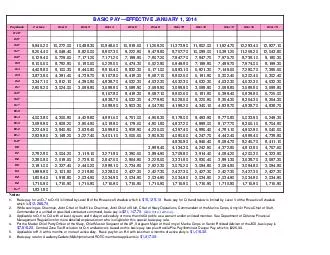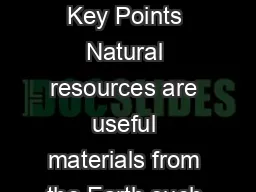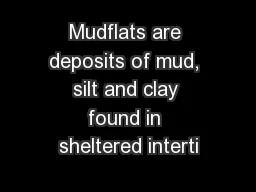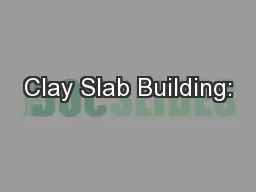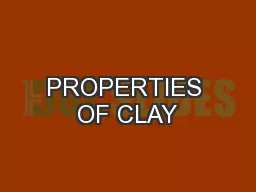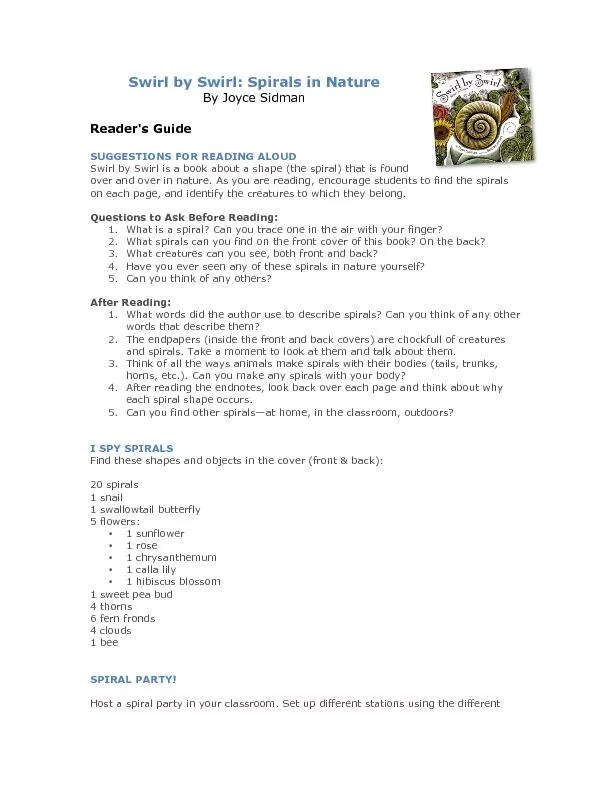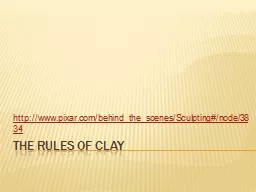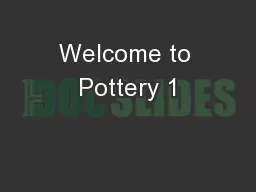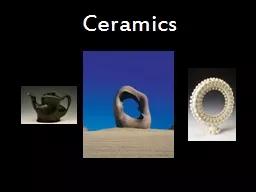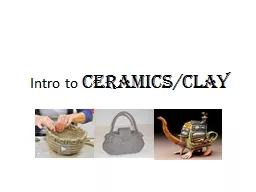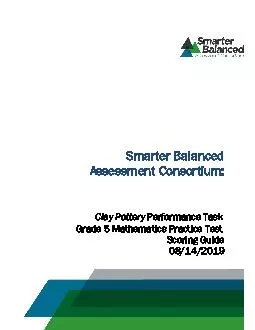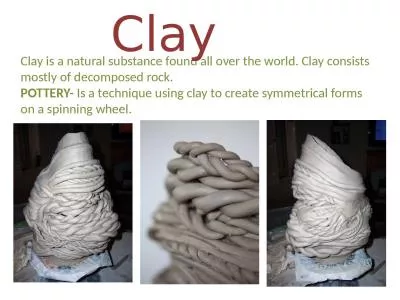PPT-Clay is a natural substance found all over the world. Clay
Author : test | Published Date : 2017-07-13
POTTERY Is a technique using clay to create symmetrical forms on a spinning wheel Clay Clay is Soft and Flexible when Wet Hard when Dry and Permanent when Fired
Presentation Embed Code
Download Presentation
Download Presentation The PPT/PDF document "Clay is a natural substance found all ov..." is the property of its rightful owner. Permission is granted to download and print the materials on this website for personal, non-commercial use only, and to display it on your personal computer provided you do not modify the materials and that you retain all copyright notices contained in the materials. By downloading content from our website, you accept the terms of this agreement.
Clay is a natural substance found all over the world. Clay: Transcript
POTTERY Is a technique using clay to create symmetrical forms on a spinning wheel Clay Clay is Soft and Flexible when Wet Hard when Dry and Permanent when Fired Ceramics is the Art of making something out of clay. 57452574555744357441574525745257465 5745957455574615745857443574455744457376 5744857455574615745957445 57458574555744157459574605744557444 onthe go 57457574615744157452574495746057465573765745357445574415746057459 574485744157462574495 20 1027200 1048830 1054860 1081860 1126920 1137390 1180200 1192470 1229340 1282710 O7 826440 864840 882600 896730 922290 947580 976770 1005900 1035120 1126920 1204380 O6 612540 672960 717120 717120 719850 750720 754770 754770 797670 873510 918030 O5 People use natural resources as raw materials to manufacture or create a range of modern conven iences Water and food provide humans with sustenance and energy for example and fossil fuels generate heat as well as energy for trans portation and indu Where can Mudflats be found in the Solent? Langstone Harbour Chichester Harbour River Hamble Lymington Estuary Beaulieu Estuary Isle of WightMedina Estuary Bembridge Harbour Kings Quay CreekIn the Sol Lanterns. . s. lab . building is a type of . clay construction . that uses . leather . hard . slabs . to create . structures . a. . clay glue . known as . slip. is used to help stick the clay slabs together. What distinguishes clay a potter uses from plain . ol. ’ dirt?. Three Essential Properties. Plasticity. Porosity. Vitrification. PLASTICITY. The ability to hold its . form. while at the same time be . Think of all the ways animals make spirals with their bodies (tails, trunks, horns, etc.). Can you make any spirals with your body? 4. After reading the endnotes, look back over each page and think ab http://www.pixar.com/behind_the_scenes/Sculpting#/. node/3834. . Objectives. Review the different techniques of building with clay. Understand the importance of clay rules. Demonstrate Knowledge by becoming an “expert” at a technique and showing the class.. Pinch Pot. Coil Pot. Relief Tile. Slab Container with Lid. Sculpture. Clay Stamps. Salt and Pepper Shakers. Lantern . Pottery Wheel Projects. Uses and Sources of Clay. The most significant ceramic material is CLAY!. Wedging. Working clay on a surface with the palms of the hands in order to remove air from it and obtain a uniform consistency. . Leather hard. The condition of unfired clay when most of the moisture has evaporated leaving it still soft enough to be carved into or joined to other pieces. . 3 Properties that make up clay. 1. Plasticity (ability to form). 2. Porosity (ability to hold moisture). *Similar to a sponge. 3. Vitrify (ability to harden and keep its shape). 3 types of clay. Clay is characterized by it’s iron content (color), vitrification process, and firing temperature.. La gamme de thé MORPHEE vise toute générations recherchant le sommeil paisible tant désiré et non procuré par tout types de médicaments. Essentiellement composé de feuille de morphine, ce thé vous assurera d’un rétablissement digne d’un voyage sur . �� ��Smarter Balanced Mathematics Grade 5 Scoring Guide �� Grade 5 Mathematics Clay Pottery Performance Task 1 Which project needs the most clay? A. Small Pla . POTTERY- . Is a technique using clay to create symmetrical forms on a spinning wheel. . Clay. Clay is Soft and Flexible when Wet, Hard when Dry, and Permanent when Fired.. Ceramics. - is the Art of making something out of clay..
Download Document
Here is the link to download the presentation.
"Clay is a natural substance found all over the world. Clay"The content belongs to its owner. You may download and print it for personal use, without modification, and keep all copyright notices. By downloading, you agree to these terms.
Related Documents


